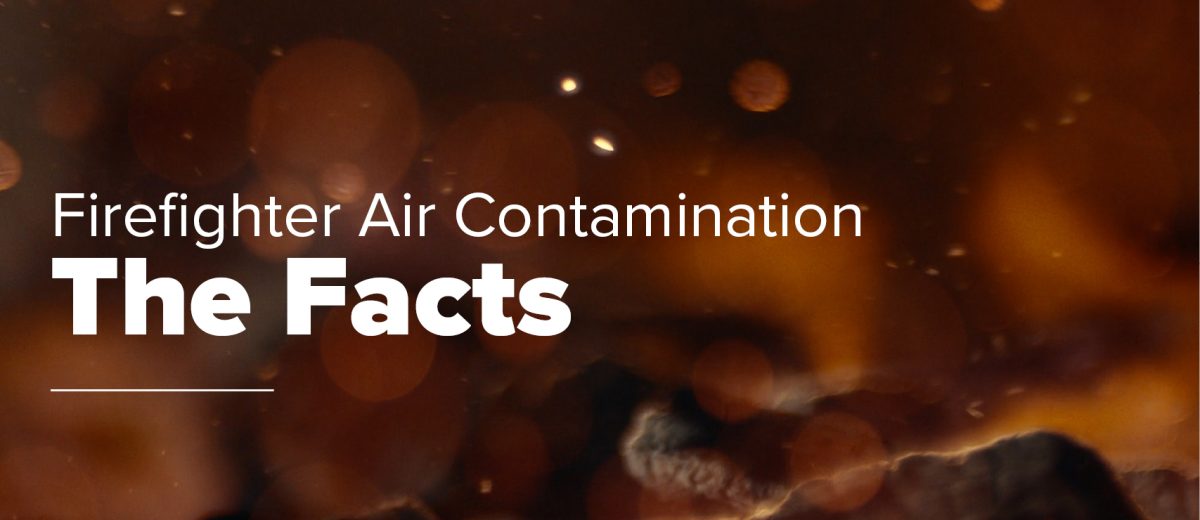What You Need to Know About Firefighter Air Contamination
There are many health and safety concerns that you worry about in the fire service. Every day you ensure your gear is in good condition, verify that your hoses and firefighting nozzles are working properly, and check the apparatus for defects or issues. You know the importance of wearing an SCBA during a fire and protecting yourself from smoke. You know how dangerous things can be, but are you looking past the air contamination that can affect your crew in the apparatus cab or back at the station?
After a fire, you and your crew carry a variety of contaminants back with you. Unfortunately, these contaminants can cause cancer, infectious diseases, and other health challenges. But what should you be watching out for?
In this article, we’re going to talk about the air contamination facing the fire service and how you can protect your crew.
Air Contamination and Firefighter Health
Contaminants are a real threat to the health and safety of firefighters. According to statistics published by the Center for Disease Control and The National Institute for Occupational Safety and Health (NIOSH), between 2002 and 2019 two-thirds of line-of-duty deaths among firefighters were caused by cancer. In 2020, one-third of first responder deaths were caused by COVID-19. Those numbers are staggering – so what factors contribute to this?
When your crew loads back into the apparatus cab after a fire, their gear is contaminated. You’re familiar with the strong smell of smoke after a fire – you can smell the contamination. This pollution includes volatile organic compounds (VOCs), particulates, and soot. These contaminants stay in the air for prolonged periods, particularly VOCs. As these threats are circulated inside the cab or ambulance, or distributed in the air at the station, they can be inhaled or land on your skin.
Off-Gassing
The smell of smoke on your gear, in the cab, and at the station is evidence of off-gassing VOCs, particulates, and soot. This means over time, contaminants that landed on your gear are released back into the air where they can remain for extended periods.
You’ve already taken some steps to mitigate these concerns by using gross decon methods after a call, washing your gear regularly, cleaning your fire hoses after a call, and wiping down exposed surfaces. You may even have a second set of turnouts available to your crew. Each of these actions mitigates the contamination you face, but none of these can clean the air once contaminants have been introduced.
Viruses and Bacteria
In addition to VOCs and particulates, aerosols carrying viruses and bacteria, such as SARS-CoV-2 which causes COVID-19, can be circulated in the air. Operating in close quarters, such as an apparatus cab or shared living area, puts your crew more at risk for contracting a communicable, airborne disease.
These three major threats; VOCs, particulates, and aerosols carrying viruses and bacteria are the biggest airborne concerns for your crew.
How do I Protect My Crew?
To protect your crew from air contamination, you need a solution that can lower your risks by mitigating VOCs, particulates, soot, and aerosols carrying viruses and bacteria. The solution is an air decontamination and filtration system.
As you begin looking at air decontamination systems, it is easy to get overwhelmed by the options and different technologies available. To make it easier, here are a few things you should evaluate as you consider your options:
- What are you trying to clean from the air? If viruses and bacteria are your only concern, you may not need a fully comprehensive solution. If you want to reduce all three major threats facing firefighters, you will need a more robust system capable of capturing particulates, gases, and viruses.
- What does maintenance and upkeep look like over the life of the unit? Is it easy to use, clean, and maintain over time?
- Will the system still work if we open and close the windows or doors in the apparatus or station?
- How do we dispose of the captured contaminants? Is there a special process or can they go in the trash?
- How will heat, cold, humidity and other atmospheric conditions affect the unit’s operation?
- Do we need to manually turn the unit on and off? Can we adjust the settings to make it more or less effective?
- Where does the unit need to go? Are there placement options, size limitations, clearance needs, or other concerns that make finding space for it difficult?
Now What?
Now that you know a little more about the health concerns surrounding air contamination in the fire service and how you can start protecting your crew, you likely have a few more questions. Keep exploring for more answers!
